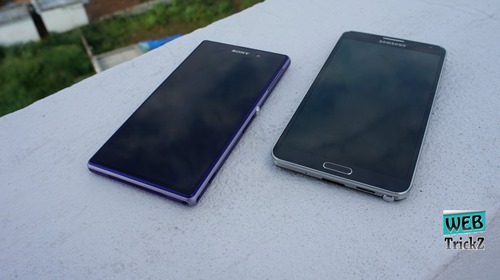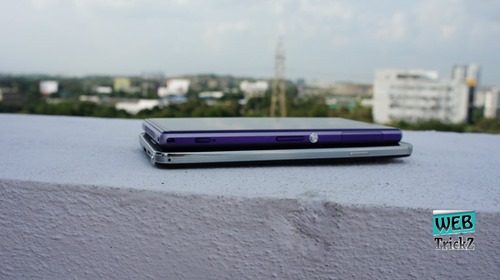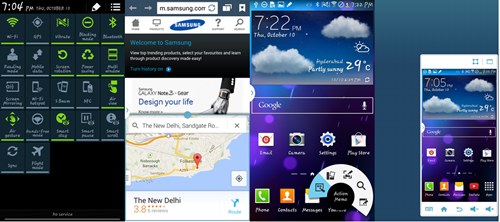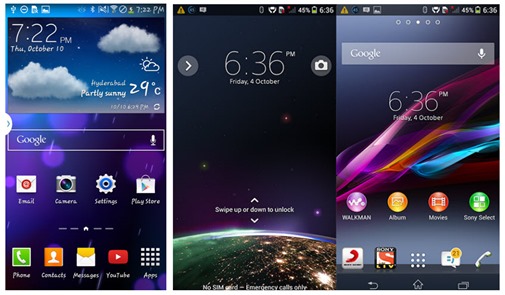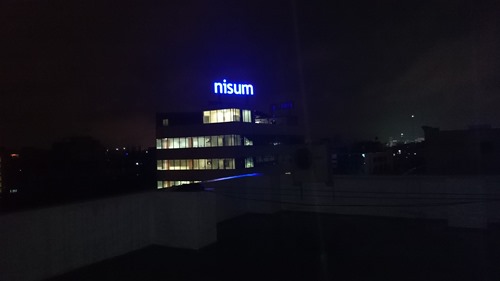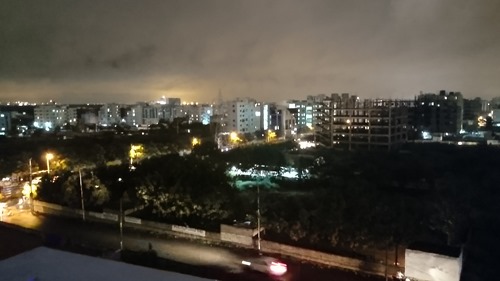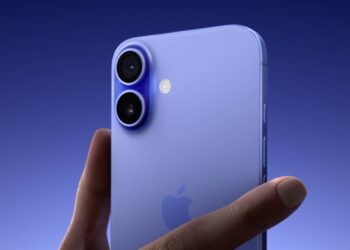Design and Display:
Software and UI:
Both the phones – Galaxy Note 3 and Xperia Z1 run on the latest Android Jellybean operating system and on top of it is the proprietary UI by each of the device manufacturers that aims to revamp the stock Android UI experience and let the users access the most used features with minimum taps possible. I am sure, the comparison of Samsung’s TouchWiz UI and Xperia UI is itself worth an individual post so I will not go ahead declaring which one is superior to the other. But in terms of software features, Note 3 has got some cool and productivity enhancement tools that include a multi-window feature and air-gesture combined with other proprietary apps such as S Memo – for taking notes flawlessly using the S-pen that comes bundled with the device, SHealth for tracking workouts and steps count, story album, group play, etc. On the contrary, if you prefer clean and uniform UI over the ease of use and number of functionalities available, then chances are high that you would want to go for Sony’s Xperia UI over Samsung’s TouchWiz.
Specifications, Storage and Battery:
Camera:
(Low light photography using Xperia Z1)
On the contrary, even the 13.1 MP camera on Note 3 performs its task well as long as you are snapping pics in bright light, but low light photography using Note 3 will leave you a tad disappointed. Just like the Z1, the Note 3 has a 2 MP secondary camera both of them capable of shooting full HD videos at 30 FPS.

Pricing:
Final Verdict:
Both the devices, Xperia Z1 and Note 3 cater well to their targeted customers. At the end of the day, it would be very difficult for us to answer which device is superior to the other. While Note 3 is more of a tool for professionals that promises to increase productivity with its S-pen features, large screen size for better multi-tasking using the multi-window, etc; The Xperia Z1 is kind of balanced phone with not a huge screen like that of Note 3 and it surely gives Note 3 a run for its money.
We are sure, just like us even you will have difficulty choosing 1 among the two devices, but let me reiterate, if you are comfortable with a phablet then the Note 3 is probably one of the best devices out there but if you are looking for all-round features if you are a person who believes in clean UI and uses your mobile a lot for photography then the Xperia Z1 is for you.


